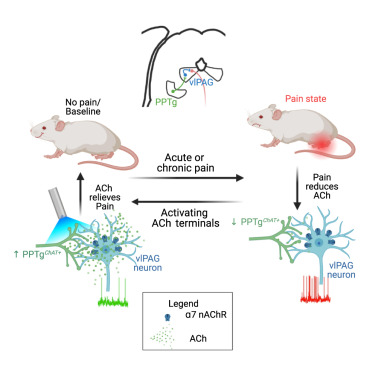Severe chronic pain is a long-term condition that significantly impairs function and quality of life. In patients who have been exposed to opioids over extended periods, opioid tolerance—a reduced responsiveness to the drug—poses complex challenges in pain management. Opioid tolerance leads to a diminished analgesic effect, necessitating higher doses for the same relief and increasing the risk of side effects, dependency, and overdose.

Clinical Criteria for Opioid-Tolerant Patients
Patients are considered opioid-tolerant when they have been receiving, for at least one week, daily doses of opioids at or above:
- 60 mg oral morphine
- 25 mcg transdermal fentanyl/hour
- 30 mg oral oxycodone
- 8 mg oral hydromorphone
- 25 mg oral oxymorphone
Such patients require highly individualized treatment regimens with comprehensive monitoring to ensure efficacy and safety.
Mechanisms and Implications of Opioid Tolerance
Biological Mechanisms
- Receptor downregulation: Opioid receptors become less responsive.
- Neuroplastic changes: Alterations in pain pathways reduce opioid effectiveness.
- Opioid-induced hyperalgesia: Paradoxical increase in pain sensitivity.
Clinical Consequences
- Escalating opioid doses with diminishing returns
- Higher susceptibility to adverse effects (sedation, respiratory depression)
- Complex withdrawal profiles when tapering
Treatment Framework for Opioid-Tolerant Chronic Pain Patients
Initial Evaluation and Functional Goals
A successful management strategy starts with:
- Assessing pain origin, intensity, and impact on life
- Setting realistic functional goals rather than complete pain elimination
- Evaluating co-existing psychological or medical conditions
- Reviewing current and past medication regimens
Opioid Rotation and Dose Adjustment
Opioid rotation—switching to an equianalgesic dose of a different opioid—can help overcome tolerance and improve pain control. The process includes:
- Calculating equianalgesic doses using standardized tables
- Applying a cross-tolerance reduction (typically 25–50%)
- Closely monitoring for both pain relief and adverse reactions
| Original Opioid | Dose (mg/day) | New Opioid | Equianalgesic Dose | Adjusted Dose (after 30% reduction) |
|---|---|---|---|---|
| Morphine | 90 | Oxycodone | 60 mg | 42 mg |
| Hydromorphone | 16 | Fentanyl | 37.5 mcg/hr patch | 25 mcg/hr patch |
Multimodal Strategies to Enhance Pain Control
To reduce opioid reliance and improve pain relief, we implement multimodal therapy:
Non-Opioid Medications
- NSAIDs (e.g., diclofenac): Effective for inflammatory pain
- Anticonvulsants (e.g., gabapentin): Useful for neuropathic pain
- Antidepressants (e.g., duloxetine): Aid in mood and pain modulation
- NMDA antagonists (e.g., ketamine): For opioid-resistant pain states
Physical and Cognitive Therapies
- Physical rehabilitation: Restores mobility and reduces pain perception
- Cognitive-behavioral therapy (CBT): Restructures pain-related thought patterns
- Biofeedback and mindfulness: Promotes self-regulation of pain responses
Interventional Techniques
- Nerve blocks
- Spinal cord stimulation
- Epidural steroid injections
These techniques are especially useful in refractory cases of localized or neuropathic pain.
Monitoring, Risk Management, and Safety Protocols
Given the elevated risks in opioid-tolerant individuals, monitoring must be stringent:
- Frequent reassessments of pain, function, and opioid effectiveness
- Urine drug screening to verify compliance and rule out misuse
- PDMP checks (Prescription Drug Monitoring Program) to prevent overprescribing
- Co-prescription of naloxone in high-risk cases
Managing Adverse Effects
| Adverse Effect | Management |
|---|---|
| Constipation | Laxatives, dietary fiber, opioid antagonists |
| Endocrine dysfunction | Hormonal testing and supplementation |
| Cognitive impairment | Dose reduction or medication adjustment |
| Respiratory depression | Emergency readiness with naloxone |
Tapering Considerations for Opioid Reduction
Tapering opioids may become necessary when:
- Risk outweighs benefit
- Pain is no longer responsive to opioids
- The patient requests discontinuation
Recommended Tapering Protocol
- Reduce dose by 10% per week if long-term use
- Offer psychological support and non-opioid adjuncts
- Monitor for withdrawal symptoms, mood changes, and relapse risk
Ethical and Clinical Challenges
Managing severe chronic pain with opioid tolerance requires:
- Balancing adequate pain control with dependency risk
- Documenting shared decision-making and informed consent
- Adhering to regulatory frameworks from CDC, DEA, and state boards
We emphasize patient-centered care that values dignity, safety, and accountability.
Innovations and Future Directions
Emerging solutions offer promise beyond traditional opioids:
- Biologic therapies targeting pain-related cytokines
- Gene editing approaches for inherited pain disorders
- Digital pain management platforms integrating AI-guided interventions
- Non-addictive analgesics under clinical trials
These advances could redefine chronic pain care, especially for opioid-tolerant populations.
Effective management of severe chronic pain in opioid-tolerant individuals demands a nuanced, evidence-based, and multidisciplinary strategy. Through personalized opioid regimens, multimodal therapy integration, risk mitigation, and ethical diligence, we can deliver sustained relief while preserving safety. Excellence in care lies in balancing compassion with precision.

